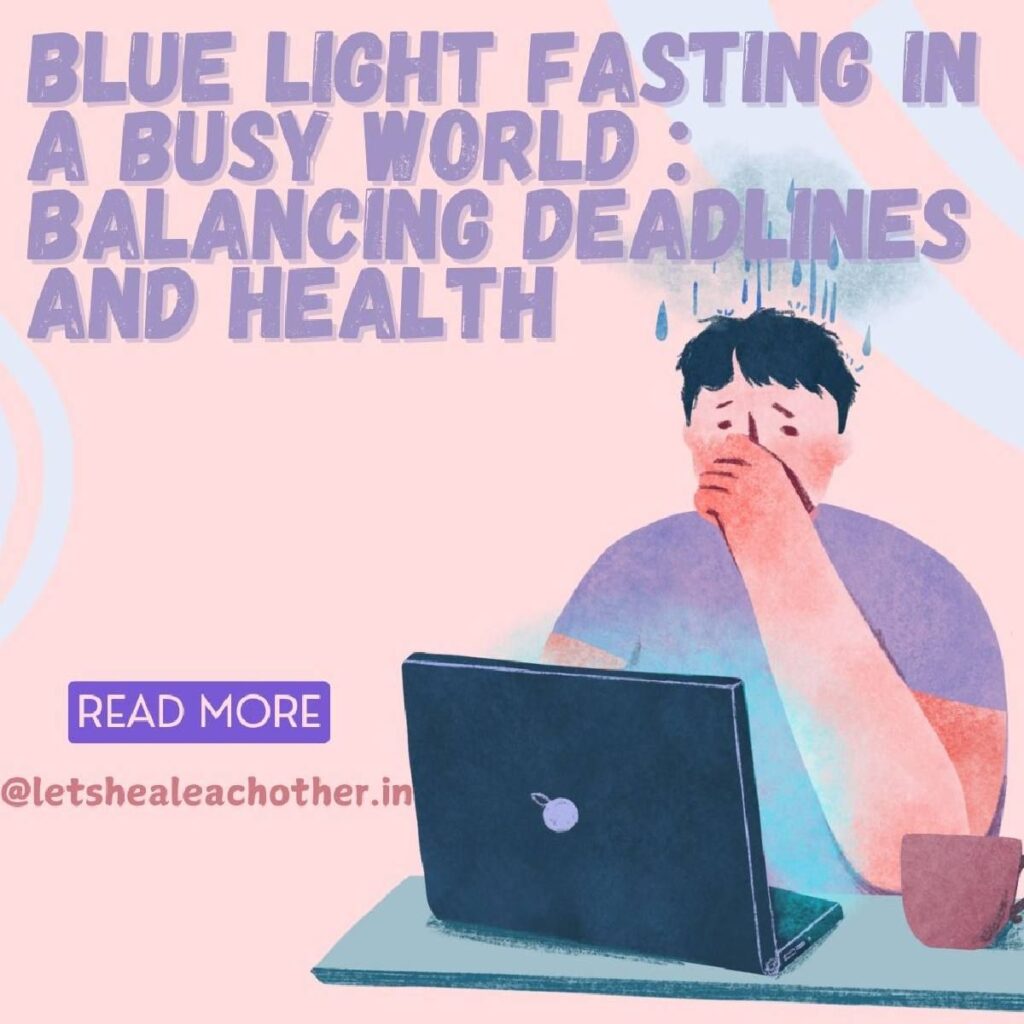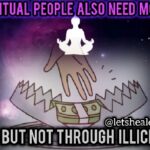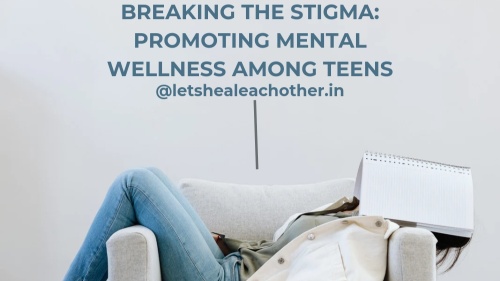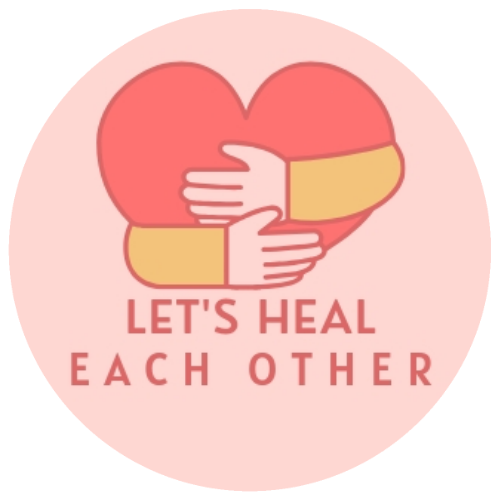Last Updated on July 16, 2025 by Author Sammy

THE DIGITAL DILEMMA: WHY IT’S TOUGH TO AVOID BLUE LIGHT
- WHAT IS BLUE LIGHT?
- THE CONCEPT OF BLUE LIGHT FASTING
- SCIENCE BEHIND BLUE LIGHT FASTING
- WHO SHOULD PRACTICE BLUE LIGHT FASTING?
- BALANCING DEADLINES AND HEALTH
- THE DIGITAL DILEMMA
- SPIRITUAL PRACTICES
- SOLUTIONS
- SMALL STEPS, BIG REWARDS
- WHY BLUE LIGHT FASTING IS WORTH THE EFFORT
- CALL TO ACTION
- 3 DIVINE FEMININE ENERGIES IN THE MAJOR ARCANA TAROTLast Updated on October 6, 2025 by Author Sammy Hello, My Soulful Readers I hope you and your family are doing well. So let us get started with our topic today. So, today I’m going to describe three divine feminine energies seen in our major arcana tarot cards from my perspective. Many tarot readers may… Read more: 3 DIVINE FEMININE ENERGIES IN THE MAJOR ARCANA TAROT
- YES, SPIRITUAL PEOPLE ALSO NEED MONEY — BUT NOT THROUGH ILLICIT GAINS
- EVERYTHING IS PERFECTLY TIMED- “FAITH AND EVEN DOUBT” FAQs On Astrology,Destiny And Life PathsLast Updated on August 7, 2025 by Author Sammy YOUR DOUBT IS ALSO CONSIDERED SACRED, BUT WHO KNOWS THAT IT CAN BE THE FIRST STEP TOWARD CONVICTIONS EVERYTHING IS PERFECTLY TIMED- “FAITH AND EVEN DOUBT” Before I get started, let me start by saying that everyone is welcome here, regardless of whether they believe in… Read more: EVERYTHING IS PERFECTLY TIMED- “FAITH AND EVEN DOUBT” FAQs On Astrology,Destiny And Life Paths
- BEAUTY ON YOUR PLATE: FOODS THAT PROMOTE NATURAL BEAUTYLast Updated on July 19, 2025 by Author Sammy An Amiable Reminder To Embrace Your Inherent Beauty In a society that is rushing for rapid repairs and changes, it’s simple to believe that beauty can be purchased, modified or implanted. The kind of beauty that draws attention and moves people’s emotions, however, is not found behind… Read more: BEAUTY ON YOUR PLATE: FOODS THAT PROMOTE NATURAL BEAUTY
- Beauty Standards Are On Read – NOT RESPONDINGLast Updated on July 24, 2025 by Author Sammy WHO ESTABLISHED THE GUIDELINES? Perfection used to be synonymous with morality. Sculpting character was more important than having glass skin or cheekbones. People wanted to be flawless in their actions rather than their looks. They put their all into becoming the best versions of themselves by… Read more: Beauty Standards Are On Read – NOT RESPONDING
WHAT IS BLUE LIGHT?
Are You Struggling To Sleep? Blame The Blue Light. What Is Blue Light ?
Digital screens and sunshine both emit blue light, a short-wavelength, high-energy light. Even though blue light helps control alertness during the day, too much of it at night can interfere with the body’s synthesis of the hormone that promotes sleep, melatonin, which can cause sleep disorders and other health problems.
THE CONCEPT OF BLUE LIGHT FASTING
Why You Should Try Blue Light Fasting Before Bed
In blue light fasting, screens and artificial light sources are purposefully avoided during certain evening hours. See it as a kind of “DIGITAL DETOX” for your brain and eyes, designed to help you avoid being overstimulated right before bed.
Blue light fasting” is the practice of minimizing or avoiding exposure to blue light, which is released by electronics like computers, telephones, and LED lights, at night. This wellness movement seeks to revitalize the body’s natural circadian rhythm and improve overall health by reducing the detrimental effects of artificial light on hormone balance and sleep.
SCIENCE BEHIND BLUE LIGHT FASTING
Why You Can’t Sleep: The Blue Light Connection
MELATONIN AND SLEEP: Research indicates that exposure to blue light can delay the beginning of sleep by up to 85% by suppressing melatonin production.
CIRCADIAN RHYTHM DISRUPTION: Too much blue light in the evening throws off the body’s circadian rhythm, making it more difficult to go asleep and wake up on your own.
EYE HEALTH: Prolonged blue light exposure may raise the risk of macular degeneration.
BLUE LIGHT FASTING’S HEALTH BENEFITS,
Include better sleep quality. lessens melatonin suppression, which promotes deeper and quicker sleep. Improved Mental Well-being reduces the likelihood of melancholy and anxiety brought on by irregular circadian rhythms.
Lessens the symptoms of digital eye strain, such as headaches, dry eyes, and blurred vision.
Increased Physical Recuperation helps the body’s natural healing processes, which take place while you sleep.
Circadian Rhythm Alignment encourages a balanced sleep-wake cycle, which improves energy levels and daytime productivity
WHO SHOULD PRACTICE BLUE LIGHT FASTING?
Those who have trouble sleeping well are known as INSOMNIACS.
DIGITAL WORKERS, People who work long hours in front of screens.
HEALTH ENTHUSIASTS, People looking for overall well-being.
YOUNGSTERS AND TEENAGERS: To create good habits and safeguard developing eyes.
BALANCING DEADLINES AND HEALTH
How To Balance Work Deadlines And Your Sleep Routine
Digital screens and sunshine both emit blue light, a short-wavelength, high-energy light. Even though blue light helps control alertness during the day, too much of it at night can interfere with the body’s synthesis of the hormone that promotes sleep, melatonin, which can cause sleep disorders and other health problems.
THE DIGITAL DILEMMA: WHY IT’S TOUGH TO AVOID BLUE LIGHT
The Digital Dilemma, The Reasons Why Avoiding Blue Light Is Difficult It is difficult to reduce blue light exposure in modern living.
Work Commitments, A lot of occupations necessitate extended screen time, which frequently extends into the night.
Constant Notifications, Digital communication requires constant attention.
Work deadlines and tasks, that must be completed late at night
Relaxing with Screens, Even leisure time is dominated by screens, whether it be for social media surfing or streaming shows.
The fear of missing out, or FOMO Priorities for health are frequently overshadowed by the desire to stay connected.
Reliance on electronic messaging, Emails, instant chat, and online meetings are essential components of contemporary workplace culture.
Absence Of Awareness Not many individuals know how blue light impacts their productivity and well-being.
Individual Routines and Amusement, People frequently use screen-based leisure activities, such as social network scrolling or binge-watching television, to relax even after work.
SPIRITUAL PRACTICES
Too much blue light exposure, particularly at night, can interfere with spiritual and bodily well-being. Here’s how:
FOCUS AND MEDITATION Are Disrupted: Blue light overstimulates the brain, making it more difficult to focus and relax.
BLOCKED INTUITION: Sleep deprivation brought on by exposure to blue light can cause mental exhaustion, which impairs your capacity to experience higher consciousness and your inner self.
UNBALANCED ENERGY: Blue light-induced sleep disruption can interfere with your body’s natural energy flow, making it more difficult to coordinate with spiritual rhythms.
A DISRUPTED CIRCADIAN RHYTHM: Blue light disrupts the synthesis of melatonin, which is closely linked to your natural cycles. Activities like yoga or early morning meditation can be hampered by a disturbed circadian rhythm.
SOLUTIONS
Balancing Work and Blue Light Fasting
Use Blue Light-Blocking Devices Night Mode Settings: To cut down on blue light emissions, turn your gadgets on to night mode or dark mode.
Wearing blue light-filtering glasses especially during late work hours.
Put Reasonable Limits in Place Although it might not be possible to completely avoid screens, establish a “DIGITAL CURFEW” that lasts for at least half an hour before bed. As your workload permits, gradually increase this time. Make Screen-Free Activities a Priority After Work
Substitute non-digital pastimes like journaling, reading a real book, or meditation for late-night screen time.
Maximize Your Daytime Output Arrange your day so that you don’t have to work late. Utilize productivity strategies such as the Pomodoro technique to finish chores during the day and maintain focus.
Establish an Ergonomic Work Area To lessen strain, place your screen at eye level and change the brightness. To change the color temperature of your screen according to the time of day, use software such as f.lux.
SMALL STEPS, BIG REWARDS
You don’t have to totally stop being exposed to blue light;
even modest adjustments over time can have a big impact:
Prior to bed, a 30-minute digital detox enhances the quality of your sleep.
Blue light spectacles help avoid eye strain when working late into the night.
Mental clarity is improved and tension is decreased when screen time is replaced with offline activities.Your circadian rhythm will be reset, your productivity will increase, and your general well-being will be enhanced over time with these practices.
WHY BLUE LIGHT FASTING IS WORTH THE EFFORT
Tired At Work?
Blue light fasting may appear impracticable due to the pressures of modern jobs, but the long-term health benefits are indisputable. Poor sleep, chronic exhaustion, and digital eye strain all lower productivity and well-being, making it more difficult to perform well at work. You can improve your health without jeopardising your career by gradually implementing blue light fasting methods.
CALL TO ACTION
Have you tried blue light fasting? What challenges or benefits have you experienced? Share your thoughts in the comments below!







